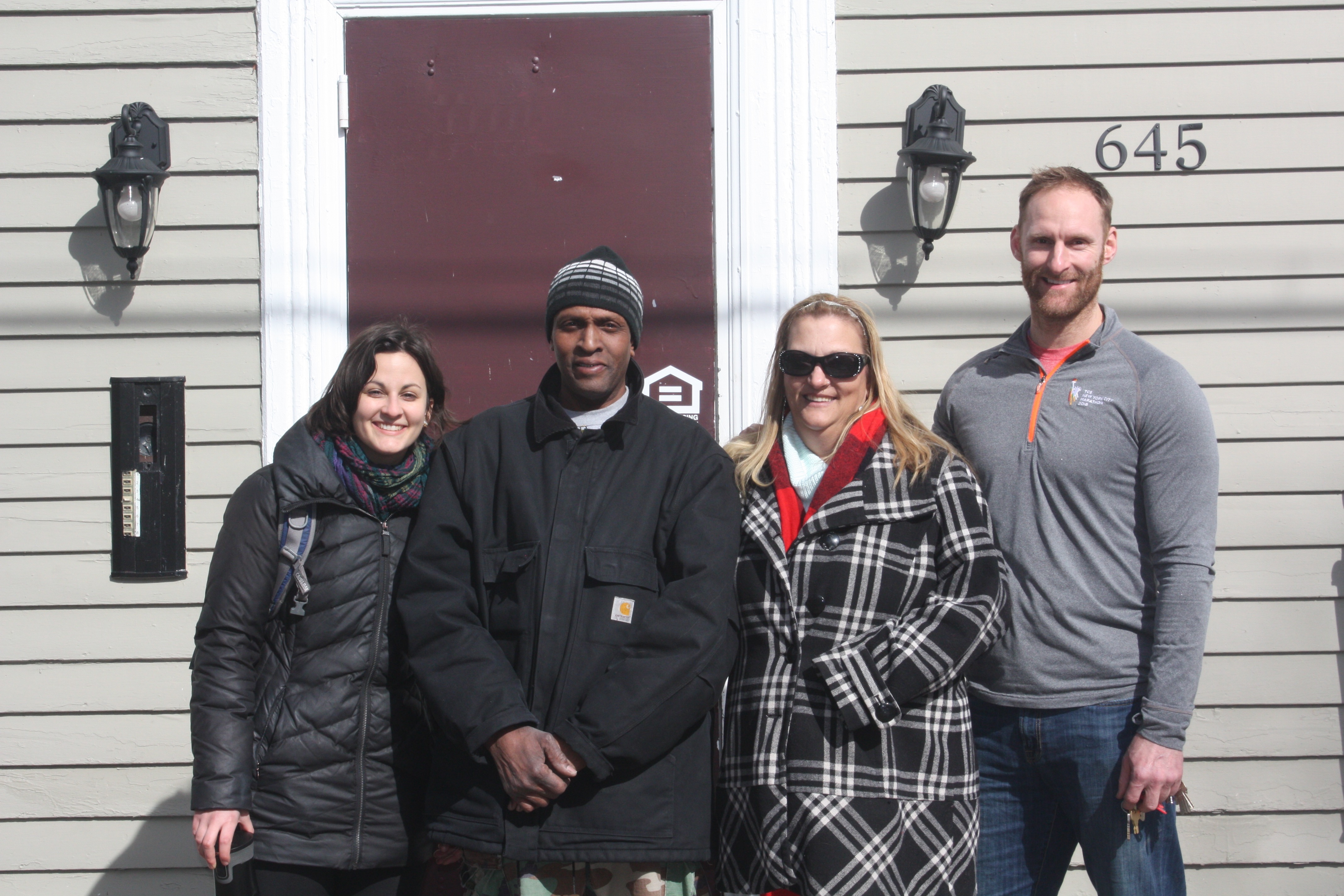By Elizabeth Ortolani
Glenn Kaifas, a local real estate developer and father of four, starts his day at a 12-unit apartment building situated on West Avenue in Buffalo. Purchased in 2015, the building is one of several properties Kaifas owns in Buffalo’s West Side and Fruit Belt neighborhoods. Like the other properties in his portfolio, the newly renovated West Avenue building tells the larger story of ways in which the Buffalo community is taking a proactive approach to solving issues that impact our city.Chronic homelessness and a lack of quality, affordable housing options are not unique to Buffalo. The decades since the the post-war housing and manufacturing booms of the 1950s and 60s have not been kind to cities like Buffalo; blue-collar, hardworking American cities that have had their decline painted in the cultural psyche through depictions in Bruce Springsteen’s “Born in the USA” or Billy Joel’s “Allentown”. Buffalo may not be unique in the problems it faces, but has found unique solutions to ensure our city’s most vulnerable and transient groups benefit from Buffalo’s revival.
It is this newspaper’s belief that, for Buffalo’s renaissance to truly be a success, members at every level of the socioeconomic ladder must reap the benefits that accompany the city’s revitalization. That is, all ships must rise together with the tides of economic and social improvement. Nonprofit community agencies like the Matt Urban Center, federal programs such as Housing First, and private capital like Kaifas are working together to ensure that no one is left behind.

The Strategy
The Matt Urban Center was the first non-profit agency in Buffalo to adopt the Housing First model in 2011. Since then, several others have followed suit in an effort to combat chronic homelessness in Western New York. Funded by the United States Department of Housing and Urban Development (HUD), Housing First is aimed at providing permanent housing for chronically homeless individuals with a disabling condition who have been homeless for over a year or have experienced four distinct episodes of homelessness in a three-year period. Unlike other homeless assistance strategies that mandate therapy or services compliance as prerequisites to housing, Housing First provides homeless individuals with permanent housing as quickly as possible – and then offers voluntary support services as needed.
Matt Urban essentially acts as the guarantor for individuals who wouldn’t otherwise qualify for these leases. Once housing passes inspection and is approved by the prospective tenant, Matt Urban signs a lease with the building owner and subleases to their client. They also provide ongoing case management and support services to ensure a smooth transition and the most successful housing outcomes for both tenants and landlords. In addition to managing relationships with 18 landlords in the area, Matt Urban has a client list of nearly 70 formerly homeless individuals who now reside in private housing. Th e organization is slightly over capacity based on federal funding allowances, but there are still 15 chronically homeless individuals in need of permanent, stable housing as of 2017.
According to Sarah Gorry, Housing First Supervisor at the Matt Urban Center, “The program promotes housing stability and individual well-being, while empowering individuals to advocate for themselves. We try to empower our clients by teaching them tenancy rules to ensure there’s a sense of accountability and ownership over where they live and how they’re living.”Kaifas has been a key advocate for the program. “There are so many people involved for the right reasons. I get to collaborate with some great people to provide quality homes at an affordable rate”.
Three Key Pillars To Success
To understand the decreased rate of chronic homelessness in Western New York is to understand the effectiveness and success of public-private partnerships as they relate to affordable housing. With a growing number of Buffalo’s homeless population relying on local nonprofit agencies that work in partnership with the private sector, Kaifas is one of several area property owners who plays a crucial role in the fight against homelessness in Buffalo. Integral to the success of the program is the strong relationship between Matt Urban and its landlord partners. Th is is a critical investment to help facilitate access to housing and promote successful housing outcomes. Success for the landlords translates to future success for the tenants and the sustainability of such programs. A positive experience for these landlords, in turn, results in their continued participation in the program. The landlord partners involved in the program point to three key pillars that make it a success:
Business Incentive
By working with the Matt Urban Center and similar community agencies, the landlords expand their prospective tenant pool, thus realizing increased and more consistent occupancy rates. According to local real estate developer Mark Lesinski, “Th e program has provided a steady, dependable tenant base for our properties along with an effective screening system for new tenants.”
Security
The Matt Urban Center provides the security that landlords need to protect their interests, by guaranteeing monthly rent payments are made on time. The program offers landlords a level of income security that other tenants can’t necessarily off er. Derek Malke, President of Alanerek Properties in Depew, believes that the program has been a net positive for his business because the rental amount is “fair and consistent.” Additionally, Matt Urban and its landlord partners collaborate to provide support services that ensure the likelihood of good citizenship and tenancy on the part of tenants in the program.
Community
Landlords have a vested financial interest in the well-being of the communities in which they hold investments and feel a strong desire to give back and provide support for those in need. These local real estate developers go above and beyond to ensure their tenants have safe, quality homes. As Kaifas expressed, “I want to be involved in the process, by giving someone the opportunity to get back on their feet.” Kasinski says, “Buffalo is my hometown and it’s great to be in a position to give back to my community.” Malke echoes these sentiments. “Th e only way we move forward is if we all work together.”Back at the apartment building on West Avenue, Glenn greets Joe, a Matt Urban client since 2011, who was recently displaced from the Shoreline Apartments, an affordable housing complex on Niagara Street that is slated for demolition some time this year. Prior to securing subsidized housing through Matt Urban, Joe was amongst the city’s chronically homeless, living in and around Fireman’s Park in downtown Buffalo. It is a collaborative effort to ensure that Joe, and others, have the opportunity to rebuild their lives. It is the responsibility of all Western New Yorkers to be good stewards of our community and to help those less fortunate. Surrounded by Kaifas and Lisa Visone Gentzler, a Matt Urban case manager, Joe says with a smile, “I’m glad to be home.”

Want more from No Boundaries? Check out our podcast!
Episode 1 lives here, on iTunes and Stitcher. Please listen, subscribe, review, and enjoy.




